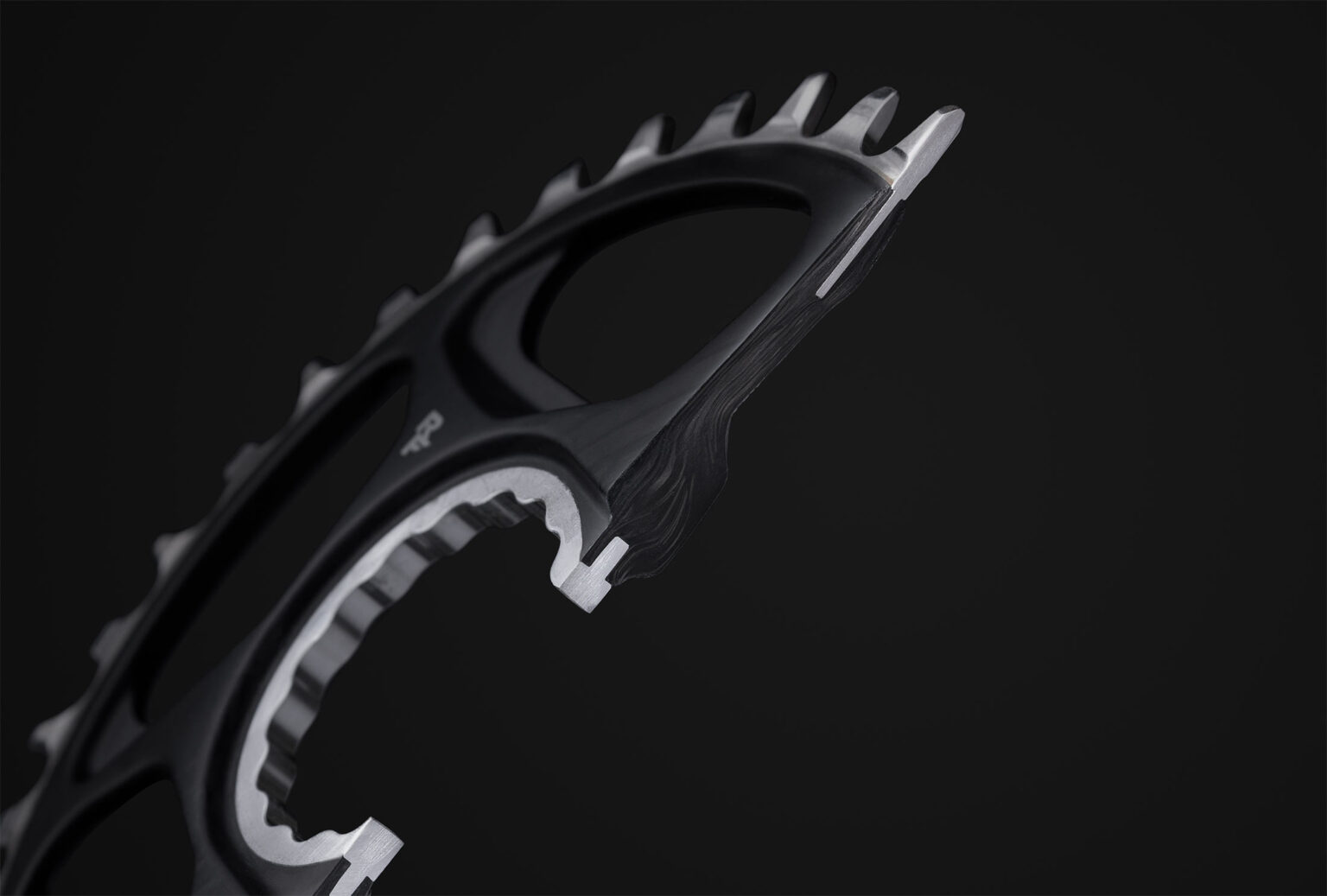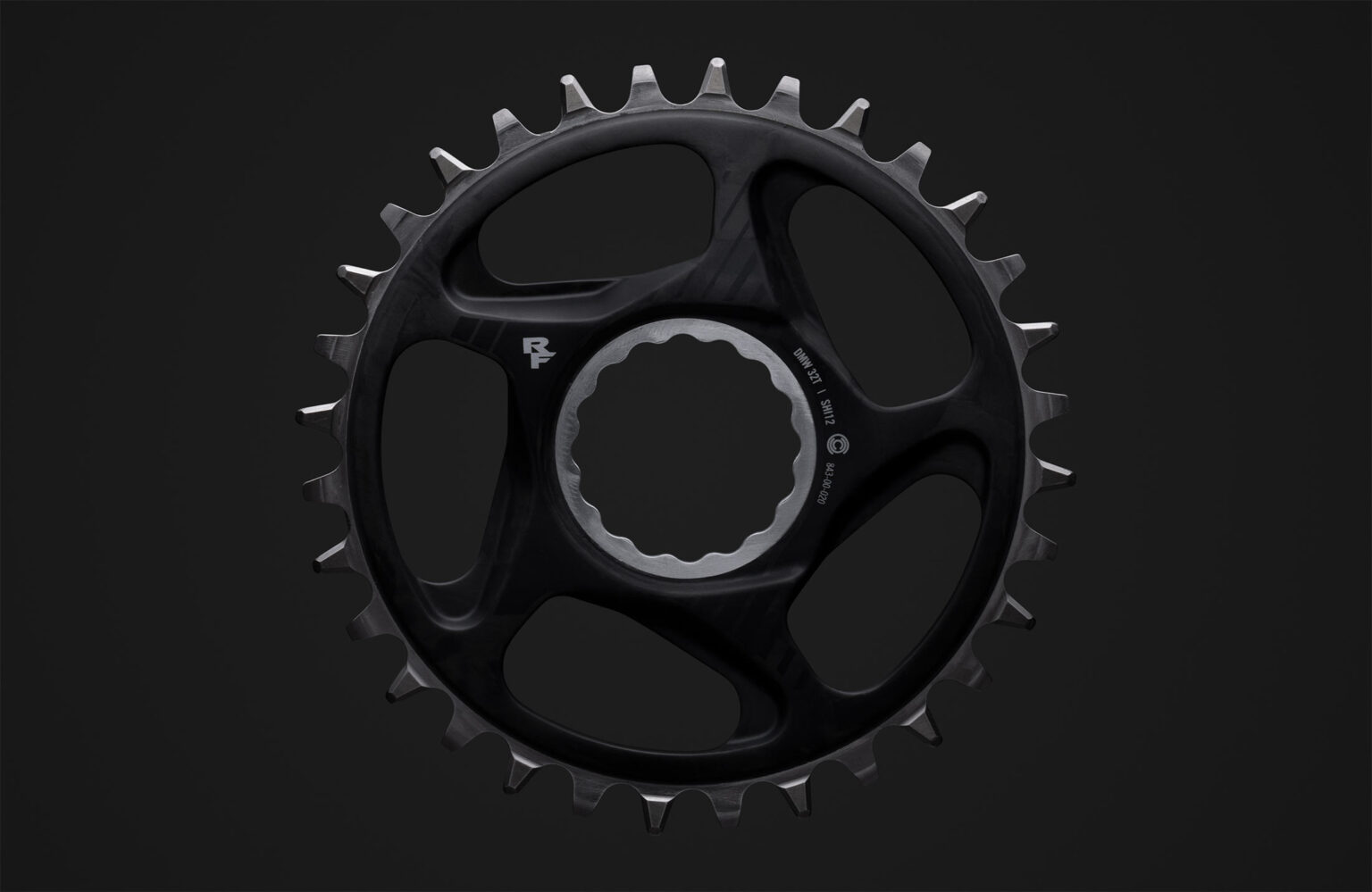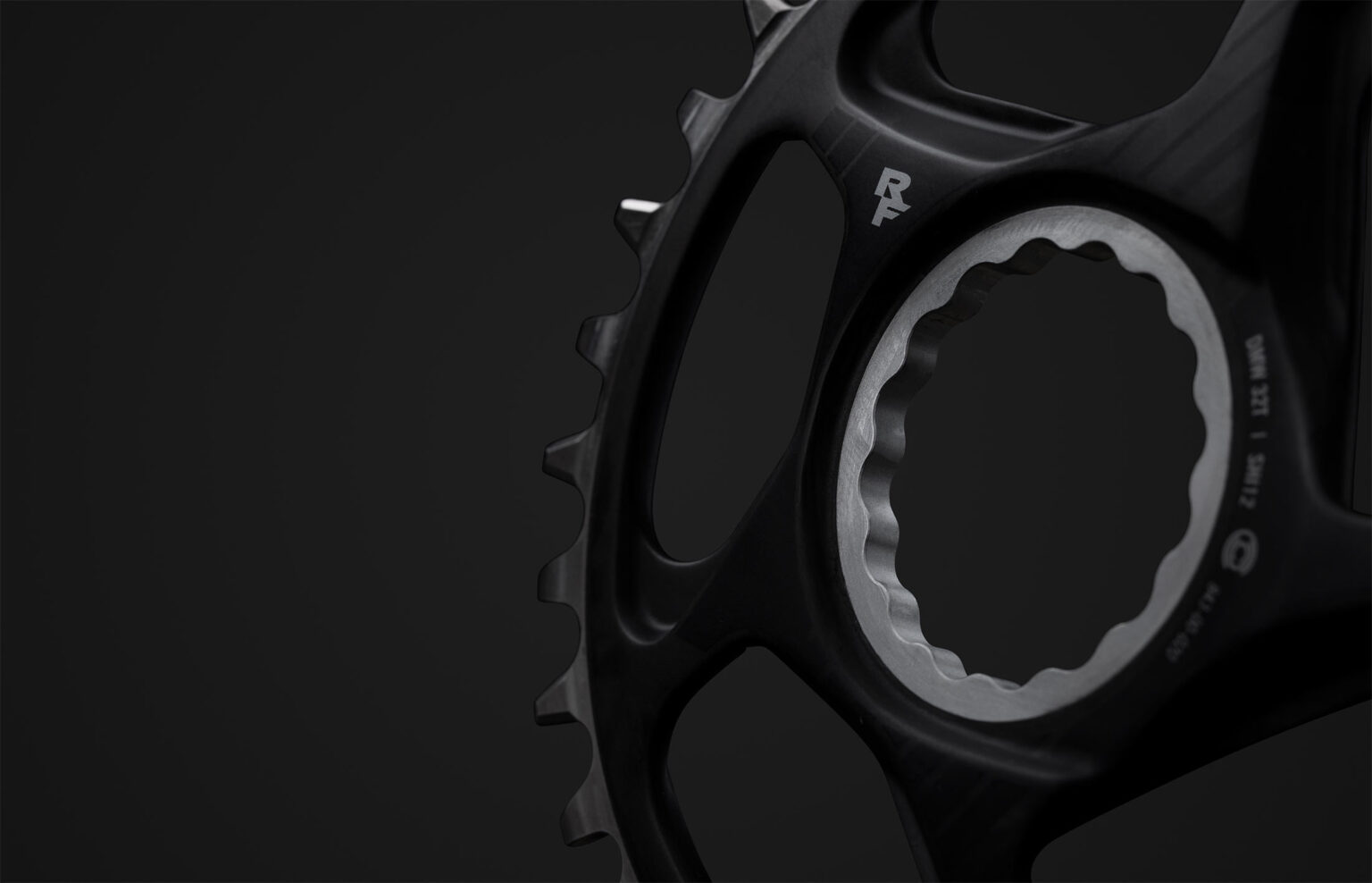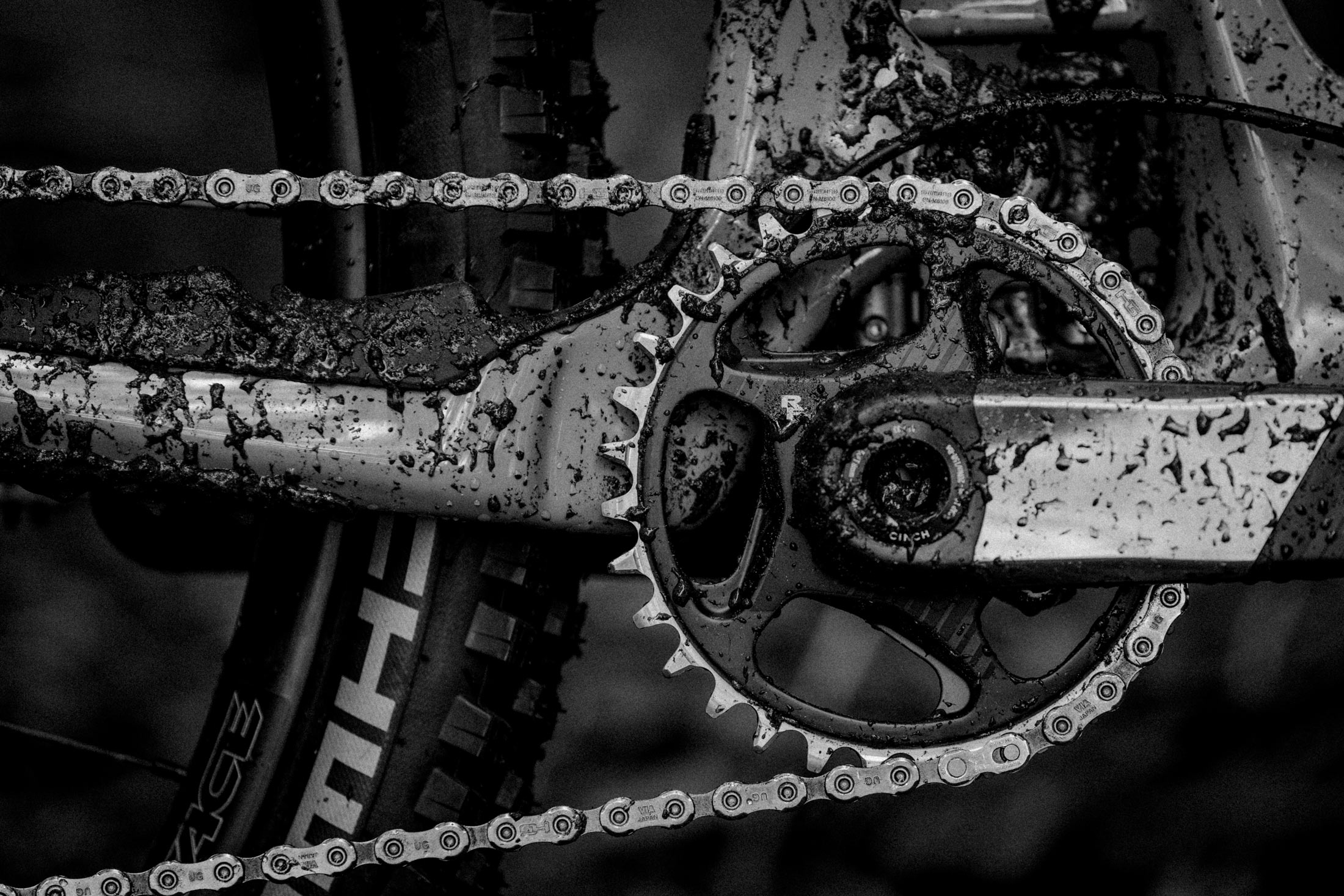OK, maybe not actually forever, but the new Race Face Era chainring has 5x the claimed life of typical alloy chainrings, and it’s just as light.
The design blends stainless steel chainring teeth with a carbon fiber spider and alloy spindle interface. Here’s how it comes together…

Race Face has been making machined alloy chainrings for about as long as they’ve been making direct-mount cranksets. But they know that steel chainrings last longer, they’re just heavy. Alloy chainrings are a lot lighter, but don’t last as long.
So, how do have both durability and light weight? Add carbon fiber, of course.

The new Era chainring is basically three parts – teeth, spider, and mounting interface.
The chainring teeth are stainless steel, which are incredibly hard. Race Face says their hardness measures 1300 MPa (Mega Pascals), versus 475 MPa for alloy. That means they’re more durable, less prone to wear, and will last about five times longer. (Titanium is 900 MPa, FYI)
The steel tooth ring has extra shaping on the inner side, giving it plenty of spiky surface area captured in the cargon. This proprietary construction method and “adhesion improving” additives prevent it from separating.
In fact, they claim it can handle about the same torque as a Cummins diesel engine, which is way more than you or I will ever produce. And the unit has the same impact strength as aluminum chainrings.

Still not convinced? In their fatigue tests, standard 12-speed chainrings from the two biggest drivetrain brands failed in 400,000 cycles or less. The Era chainring testing was stopped at 2.1 million cycles because it wasn’t showing any signs of failure. In all, it’s enough for them to give the Era chainring a lifetime guarantee against damage.

The alloy center piece is a direct mount interface for Race Face CINCH cranksets. For now, they’ll only offer this version – there are no immediate plans to offer chainrings to fit SRAM or Shimano cranksets.
But, they are compatible with SRAM and Shimano chains. Like other brands, they offer two distinct tooth profiles, one for Shimano 12sp mountain bike chains, and one for “other” 11/12sp chains (including SRAM FlatTop).
It’s available with 52mm and 55mm chain line offsets. And it’s compatible with most if not all chain guides.
MSRP is $150, about twice the cost of alloy, but with a much longer lifespan. Claimed weight is 83g (32T), and it’s available in 30/32/34 tooth counts.
Want a full matching bike? Check out the new Race Face Era handlebar and mountain bike wheels, too.
